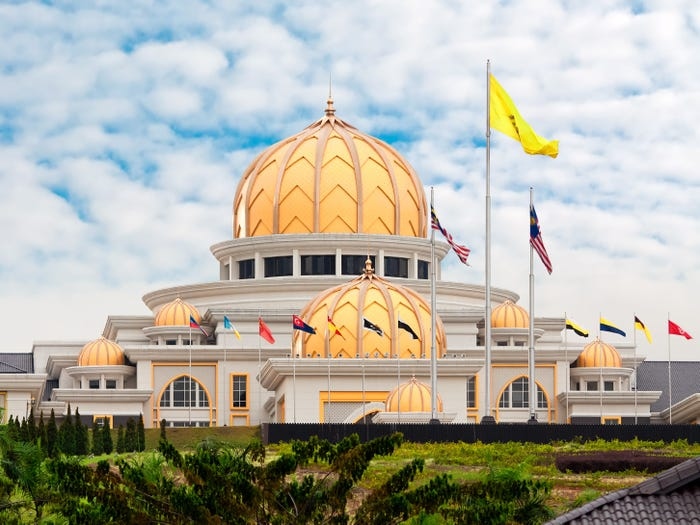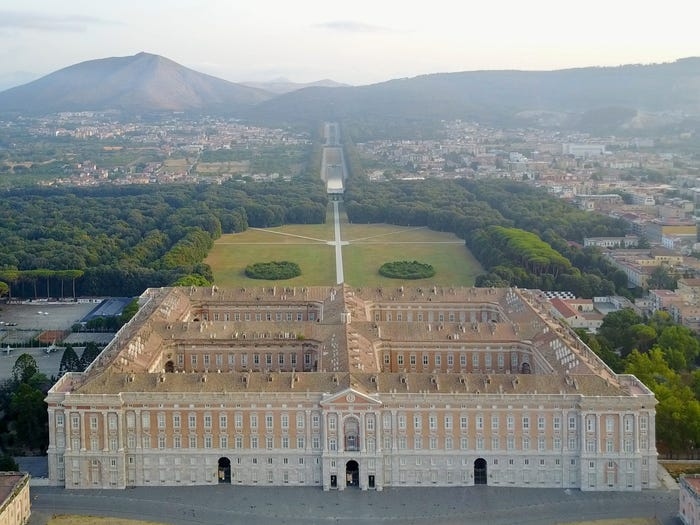Royal palaces have always been a tourist attraction, not only because of their beauty and grandeur, but also because of the cultural, architectural and artistic values they contain.

Prague Castle is located in the city of Prague built in the 9th century, once owned by the kings of Bohemia and Roman emperors. Today, the castle is the official residence of the President of the Czech Republic. This is one of the largest ancient castles in the world, the grounds are large enough to accommodate several churches and chapels and numerous sculptures.
Buckingham Palace (England): 77,000 m2
Buckingham Palace has been the official residence of the British Royal Family since 1837. It has 775 rooms, including 19 state rooms, 52 bedrooms for guests and members of the royal family, 92 offices and 78 bathrooms.
Here is the famous Buckingham Garden as the largest private garden in London, attracting a lot of visitors. A special feature is that the guards at the palace almost never show a smile or any facial expression.
Venaria Palace (Italy): 80,000 m2
Venaria Palace is located at Venaria Reale, near the city of Turin, is the residence of the Royal Savoy. This place was built in the 17th century by Duke Carlo Emanuele II and Duchess Maria Giovanna Battista of Savoy Nemours.
A UNESCO World Heritage Site, the palace possesses Baroque architecture with Diana’s Hall, St. Hubert. The galleries in the palace, notably the Galleria Grande, are among the most visited museums in Italy.
Palace of the National Palace (Malaysia): 90,000 m2
Located in the capital Kuala Lumpur, Istana Negara palace was built in 1928. With a combination of Muslim and Malay architecture, this residence includes subdivisions for royalty, ceremonies and administration. management, along with a number of facilities such as golf course, lake, swimming pool, badminton court and indoor tennis. The area is the official residence of the Malaysian monarch and is not open to the public.
Quirinal Palace (Italy): 110,000 m2
The Quirinal Palace is located in the city of Rome, with 1,200 rooms. The palace was built in 1574 by Pope Gregory XIII. It served as the official residence of the Pope from 1550 to 1870, and the official residence of the kings of Italy from 1871 until the end of the monarchy in 1946.
Currently, this is one of the three official residences of the President of Italy. The palace grounds are about 20 times larger than the size of the White House in the United States.
Royal Palace (Spain): 134,000 m2
The Royal Palace in Madrid was built on the site of a fortress dating back to the 9th century, during the reign of the Toledo kingdom. It was not until 1764 that this palace was built into the residence of the Spanish Royal Family.
The palace has 3,000 rooms, 70 windows, 240 balconies and 44 stairs. Although it remains an official residence, the Spanish Royal Family now lives in the Zarzuela Palace outside Madrid and uses the Royal Palace only for ceremonies.
Malbork Castle (Poland): 143,000 m2
Malbork Castle in Poland is the largest castle in the world by land area, about 143,000 square meters. Built by the Teutonic knights in the 12th-13th centuries, it is typical of a medieval fortress, with three walled castles in Gothic style.
The castle was heavily damaged during the Second World War, but was later restored and declared a UNESCO World Heritage Site in 1997.
Hofburg Palace (Austria): 240,000 m2
Built in the 13th century in the city center of Vienna, the palace was formerly inhabited by the Habsburg dynasty that ruled Austria, until the end of the monarchy in 1918. The palace was greatly expanded. Through the emperors, today it has 18 wings, 19 courtyards and 2,600 rooms. It is currently the official residence and workplace of the President of Austria.
Royal Palace of Caserta (Italy): The largest castle in terms of volume
Located in the city of Caserta, southern Italy, this is “the largest palace in the world in terms of volume” with more than 2 million cubic meters, although only built on an area of about 46,500 m2. Built in 1845, the palace has five floors, 1,200 rooms and a 450-seat theater.
The palace has been recognized as a World Heritage Site since 1997, described by UNESCO as “a symbol of the Enlightenment, comparable to the Palace of Versailles in France and the Royal Palace in Spain. distinguished by the way of combining a magnificent palace with gardens and parks, natural forests, hunting grounds and silk factories”.







